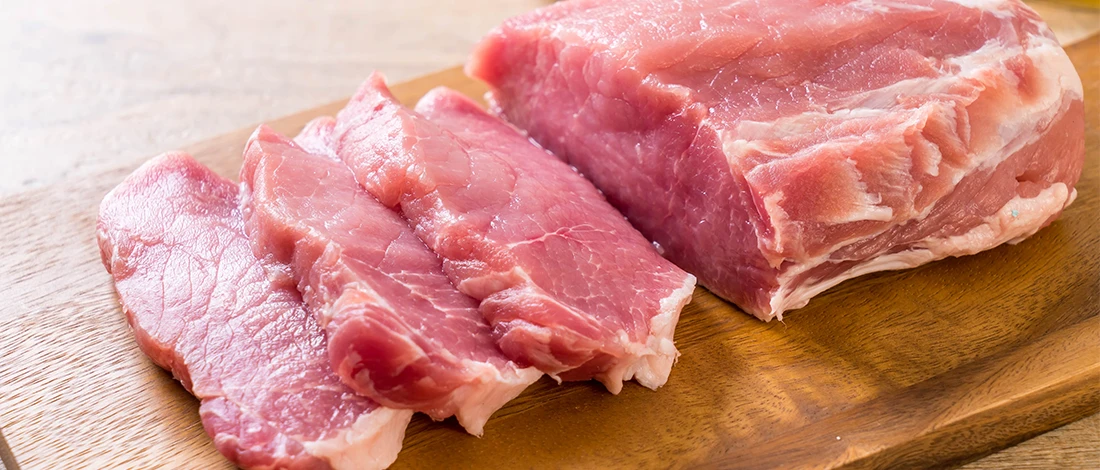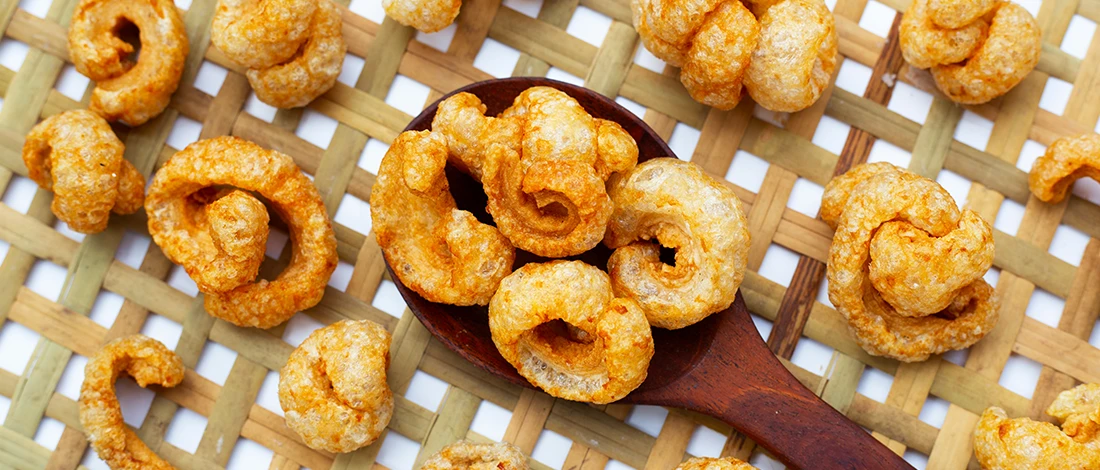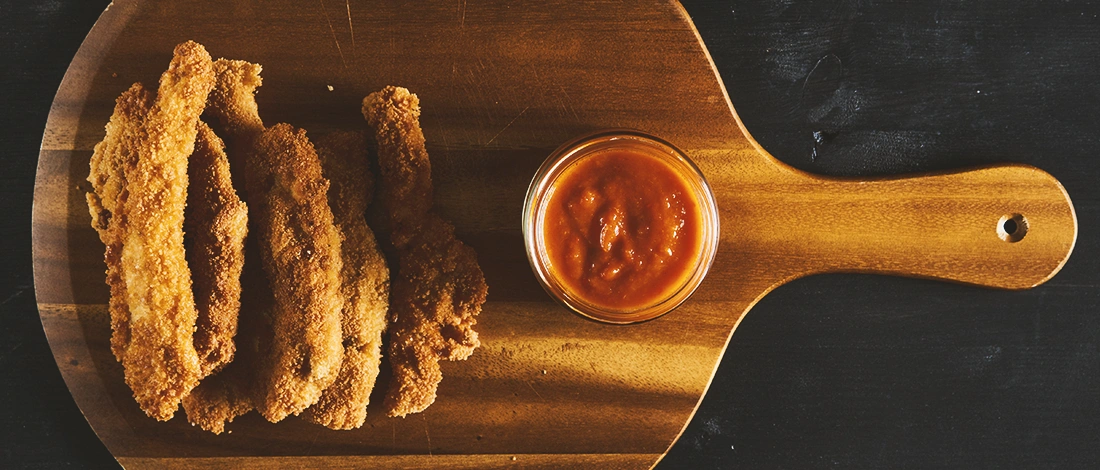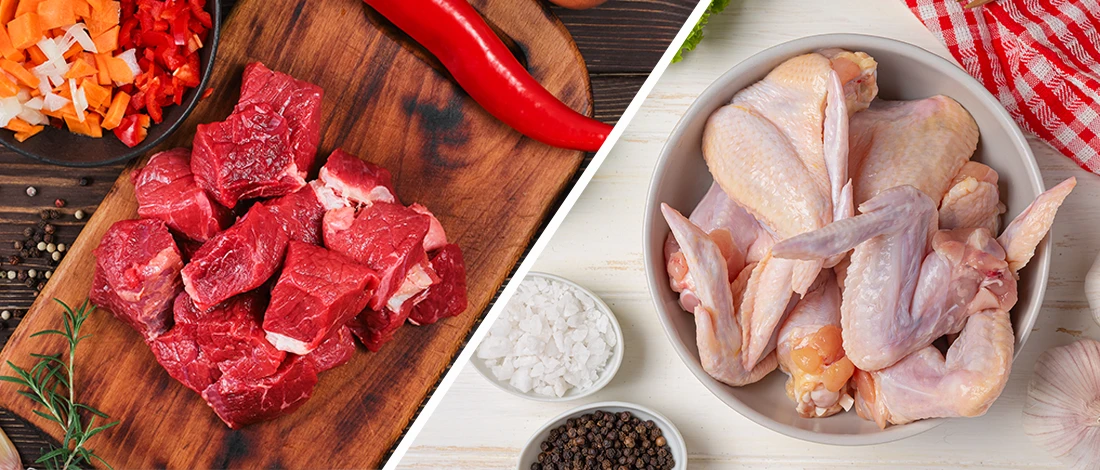Quick Summary
- Yes, pork rinds are healthy. They are an excellent source of protein, vitamins, and minerals.
- Pork rinds have less saturated fat than other processed snacks and are rich in iron, zinc, vitamins, and selenium.
- Pork rinds can cause health issues like heart problems and high cholesterol.
- To get the pork rinds health benefits, you need a quality supplier. ButcherBox sells sustainably sourced pork, beef, poultry, and seafood.
Are Pork Rinds Healthy?

Yes, pork rinds are healthy. They are an excellent source of protein, vitamins, and minerals. However, they are also high in sodium, which isn’t good for people with high blood pressure, so they should be eaten in moderation.
Pork rinds were considered unhealthy for a long time. People thought of pork rinds as high-fat, high-calorie, processed foods. The truth is pork rinds are healthier than many people give them credit for.
One serving size of pork rinds has 81 calories, 5 grams of fat, and 20 mg of cholesterol. This is much lower compared to some other snacks, such as potato chips.
Moreover, pork rinds have less saturated fat than cheese, cake, and biscuits. The fat in pork rinds is mostly monosaturated fat. This fat helps maintain cell function and reduces cholesterol [1].
Pork rind also has oleic acid, which is the same unsaturated fat as from olive oil, and can provide you with gelatin to protect the joins and help you sleep better.
This healthy snack has about 9 grams of protein per serving, which helps you build muscles and bones, aid digestion, and provide tissue repair.
“Get a pork rind that’s fried in its own fat, pork fat. Pork rinds don’t need additional oils. Manufacturers try to add additional flavor, but they make pork rinds unhealthy.”
- Thomas DeLauer, YouTube Channel
Moreover, pork rinds have a lot of collagen protein. This is a natural antioxidant that strengthens bones and helps you have better skin [2].
Another popular belief is that pork rinds are high in sodium. While this can be true, it depends from brand to brand, and there are manufacturers with low sodium options.
Finally, best pork rinds are low in carbs, which makes them great for keto and paleo diets. They are a great substitution for potato chips on these diets. You can have a snack and still stick to the diet plan.
Pork Rinds Nutrition

Here’s nutrition info for one serving of pork rinds:
- Calories: 81
- Fat: 5 g
- Cholesterol: 20 mg
- Sodium: 272 mg
- Protein: 9g
- Carbs: 0
- Fiber: 0
Pork rinds are deep-fried food that’s high in protein and is a good source of energy [3]. Our bodies need protein and fat to function properly for growth, tissue repair, and energy storage. Pork rinds help with all of these.
Pork rinds are made of deep-fried pig skin, so they have up to 7 g of collagen protein, which boosts immunity and repairs tissues. Pig skin also provides us with energy, and pork rind fat stores that energy.
Plain pork rinds are low in cholesterol. One serving of this snack has about 5% cholesterol, so it’s a good choice if you’re on a low-cholesterol diet.
Pork rinds are a good source of some vitamins and minerals, such as:
- Vitamin B12 — Helps red blood cell formation and the functioning of the nervous system.
- Niacin — Helps cell repair. It metabolizes carbs, fats, and proteins and provides healthy skin.
- Iron — Transports oxygen through the blood and forms red blood cells.
- Zinc — Grows and repairs cells, heals wounds, and produces hormones.
- Selenium — Supports the functioning of the thyroid gland.
Also Read: Pork Rinds on the Carnivore Diet
Pork Rinds Health Concerns

While fried pork skin is healthier than potato chips and tortilla chips, it has some negatives too.
1. Pork Rinds are Processed
Pork rinds go through extensive processing. Some pork rinds have additives, flavors, artificial colors, and preservatives.
Additives are especially tricky since we don’t know how they influence our bodies and their long-term effects.
2. High in Sodium
If you have too much sodium, you risk your heart health. A high sodium diet pulls water into the bloodstream, increasing blood pressure and leading to stroke and kidney disease. One serving of pork rinds contains almost half of the daily sodium intake, which is a lot.
The good news is not all pork rinds have that much sodium, so you have to find brands with low sodium (go for 150 mg of sodium per serving).
3. Can Cause Weight Gain
Processed snack foods can cause health problems, especially if they contain a lot of calories and sodium.
Pork rinds are ultra-processed foods, which means they are ready to eat, and high in salt, sugar, and fat.
People also tend to eat more calories when consuming highly processed foods. One study found that participants who had ultra-processed foods had a higher body mass index and excess weight [4].
Related Articles:
FAQs
Are Pork Rinds Healthier than Chips?
Yes, pork rinds are healthier than chips. They have fewer calories, saturated fat, carbs, and cholesterol, and more protein.
Should You Eat Pork Rinds?
Yes, you should eat pork rinds if you’re not on a low-cholesterol diet. You should also eat them if you’re on a keto diet as a substitute for potato chips.
Are Pork Rinds Fat or Skin?
Pork rinds are skin. They have no fat on the skin.
Which is Healthier, Popcorn or Pork Rinds?
Pork rinds are healthier than popcorn because they have more selenium and vitamin B12. However, popcorn has more fiber, magnesium, and iron.
Are Pork Rinds Good for Weight Loss?
Yes, pork rinds are good for weight loss because they have zero carbohydrates. Pork rinds are also low in calories.
Can Pork Rinds Raise Cholesterol Levels?
Pork rinds can raise cholesterol levels if eaten in excess because they have a high content of monounsaturated fat, which increases low-density lipoprotein (LDL) levels.
What Is the Difference Between Pork Scratchings and Pork Rinds?
The difference between pork scratchings and pork rinds is that pork scratchings are only cooked once, whereas rinds are cooked twice. The process makes rinds fluffier while scratchings stay harder on the bite.
Pork rinds offer a tasty and nutritious snack for anyone on the carnivore diet. With the right preparation, they’re packed with health benefits. For more tips on how to make the most of your carnivore lifestyle, be sure to check out other helpful guides from Carnivore Style.
References:
- https://www.ncbi.nlm.nih.gov/pmc/articles/PMC3001502/
- https://www.ncbi.nlm.nih.gov/pmc/articles/PMC6835901/
- https://www.eatthismuch.com/food/nutrition/pork-rinds,142649/
- https://pubmed.ncbi.nlm.nih.gov/29729673/








